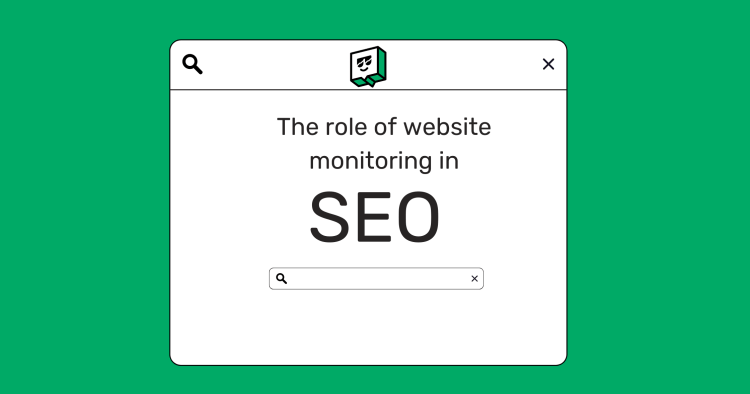
The Role of Website Monitoring in SEO: Optimizing for Search Engine Visibility
Why Website Monitoring Is Important for SEO
There is no denying that good Search Engine Optimization (SEO) for your website is pivotal to your company. Most people use search engines to find businesses. If your website is not visible due to poor SEO, it will hurt your overall profits. Better SEO means increased organic traffic, higher credibility, and high conversion.
SEO tracks various website factors to determine its rankings, such as good user experience, high uptime, page speeds, security, and performance. Tracking and organizing these factors individually would be difficult, which is why website monitoring tools are essential for maintaining and improving these factors.
What Could Hurt Your Website SEO
Here are some specific areas of weakness that could negatively affect your website SEO.
Low Website Uptime
Search engines prefer highly available websites because they provide a better user experience. If your website delivers frequent downtime, that could hurt your SEO ranking and thus will not show on search rankings.
Solution: Uptime Checks to Track Website Availability
Use website monitoring to continually check that your website is up and available for users and automatically receive alerts to solve the issue quickly. You’ll want to use a tool that allows you to configure how frequently you run these uptime checks and have the alerts give you useful details so developers can address them easily.
You can create Uptime.com checks with a specific URL, protocols, expected body, and status code. If they are attached to escalation policies, then they can automatically send alerts to specific levels of contacts to make sure that someone will address the issue in time.
Slow Page Speeds
The speed of your page is also important for SEO. If a user visits your site and the page takes too long to load, it could deter them from using it, which increases bounce rates and hurts your overall SEO.
Solution: Page Speed Monitoring
Use page speed monitoring to run daily checks to make sure your pages are delivering at an acceptable speed. Uptime.com provides useful performance reports with its page speed checks that paint the full picture of user experience with routing and distance details from the client web server and historical trends.
Bad User Experience
What typically constitutes a bad user experience could be a culmination of factors such as speed, performance, and bounce rates. Overall, if your site does not feel trustworthy or is not reliable in its availability, users will leave for the competition.
Solution: Real User Monitoring to Create a Better Quality User Experience
What is Real User Monitoring (RUM)? RUM allows you to understand why, where, and how errors happen within your website. You don’t have to guess what your users are experiencing; instead, you can use real user sessions to see how your site’s performance is measuring up. You can check the number of page views, time to interactive, Apdex score, ajax load time, and error rates of your site through this type of monitoring.
What makes RUM software extremely useful is its reports that allow you to see metrics across time to see progress. Bounce rate is one great metric that can be followed as an indicator of user experience.
Invisible Website Errors
No team can catch all errors on its own 24/7. There are too many factors to track and too many user pathways.
Solution: Fast Alerting for Quick Fixes
This is why automatic alerting is essential to notify developers of website issues in real time. Alerts allow developers to capture the issue along with details that can help them pinpoint the problem and resolve it. These alerts can be resolved or ignored based on decisions. False positives could become an issue with alerting, so it will be beneficial to reduce these by fine-tuning your trigger thresholds.
Alerts through push notifications that are linked to email, text, and third-party platforms like Slack and DataDog help ensure that someone on your DevOps team sees the communication.
Insecure Website
Websites that are dangerous for users to use will fall in SEO rankings. Malware and viruses, among other issues, can steal confidential information, install harmful software, and harm your computer system.
Solution: Security Checks for Safety
Website monitoring tools should check for malware and viruses to protect the site and its users from attacks. Uptime.com checks once per day against major malware databases such as Google Safe Browsing List and the Yandex Safe Browsing List and sends you an alert if it detects vulnerabilities.
Keep Your Website Healthy
Keeping your website healthy with lower errors and faster performance will help you optimize for SEO. Choosing the right website monitoring tool will determine how easily and effectively you can achieve this. Uptime.com offers a variety of monitoring checks, from malware to uptime, along with performance reports and alerts with details that help devs fix issues faster. Check out the 14-day free trial here, along with their free tools.
Minute-by-minute Uptime checks.
Start your 14-day free trial with no credit card required at Uptime.com.
 Uptime.com Blog
Uptime.com Blog


